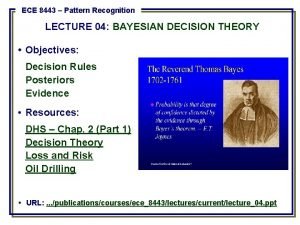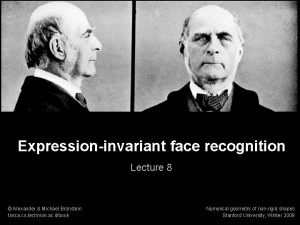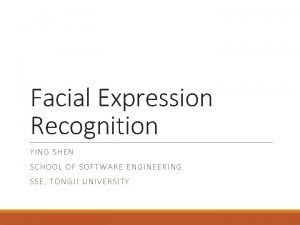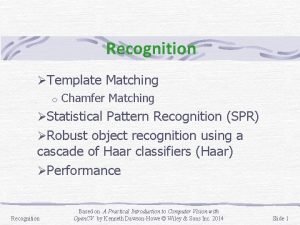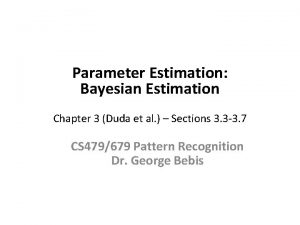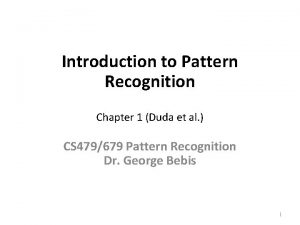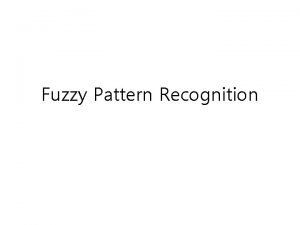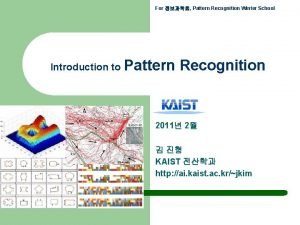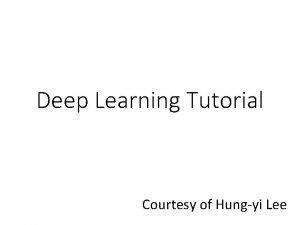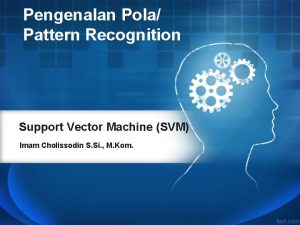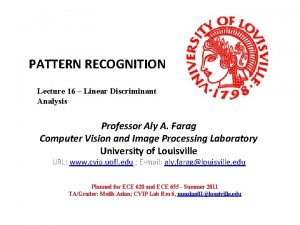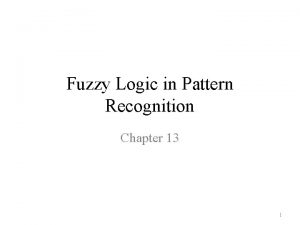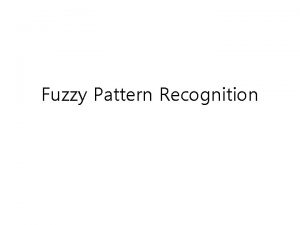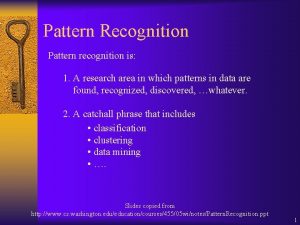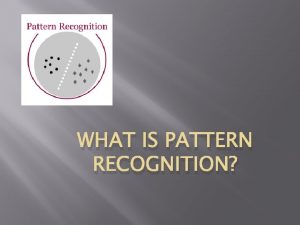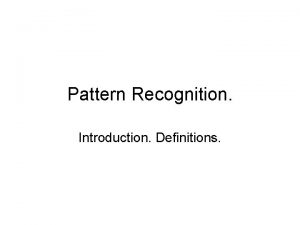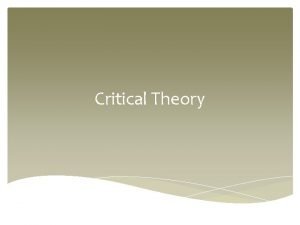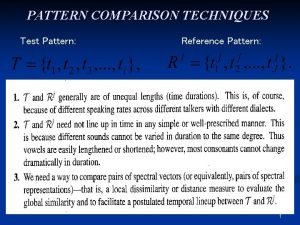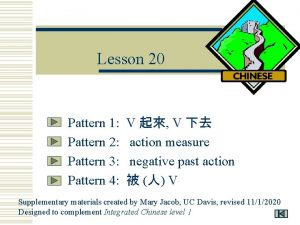Recognition with Expression Variations Pattern Recognition Theory Spring
















- Slides: 16

Recognition with Expression Variations Pattern Recognition Theory – Spring 2003 Prof. Vijayakumar Bhagavatula Derek Hoiem Tal Blum

Method Overview Training Image (Reduced) Test Image N Variables Dimensionality Reduction m<N Variables 1 -NN Euclidean Classification

Principal Components Analysis Minimize representational error in lower dimensional subspace of input Ø Choose eigenvectors corresponding to m largest eigenvalues of total scatter as the weight matrix Ø N S T = å ( x k - m )(x k - m ) T k =1 Wopt = arg max W T S T W = [ w 1 w 2. . . wm ] W

Linear Discriminant Analysis Maximize the ratio of the between-class scatter to the within-class scatter in lower dimensional space than input Ø Choose top m eigenvectors of generalized eigenvalue solution Ø c S B = å ( m i - m ) i =1 Wopt T c SW = å å ( x k - m i ) T i =1 xk Îwi W T S BW = arg max T = [ w 1 w 2. . . wm ] W W S B wi = li SW wi

LDA: Avoiding Singularity Ø For N samples and c classes: l l l Reduce dimensionality to N - c using PCA Apply LDA to reduced space Combine weight matrices Wopt = W LDAW PCA

Discriminant Analysis of Principal Components Ø For N samples and c classes: l Reduce dimensionality m<N-c l l Apply LDA to reduced space Combine weight matrices Wopt = W LDAW PCA

When PCA+LDA Can Help Ø Test includes subjects not present in training set Ø Very few (1 -3) examples available per class Ø Test samples vary significantly from training samples

Why Would PCA+LDA Help? Ø Allows more freedom of movement for maximizing between-class scatter Ø Removes potentially noisy low-ranked principal components in determining LDA projection Ø Goal is improved generalization to nontraining samples

PCA Projections Best 2 -D Projection Training Testing

LDA Projections Best 2 -D Projection Training Testing

PCA+LDA Projections Best 2 -D Projection Training Testing

Processing Time Training time: < 3 seconds (Matlab 1. 8 GHz) Ø Testing time: O( d * (N + T) ) Ø Method images/sec PCA (30) 224 LDA (12) 267 PCA+LDA (12) 267

Results Dimensio ns PCA LDA PCA+LDA 1 37. 52% 11. 28% 14. 15% 2 2. 56% 1. 13% 1. 03% 3 0. 41% 0. 00% 0. 72% 4 0. 00%

Sensitivity of PCA+LDA to Number of PCA Vectors Removed PCA+LDA (1) 13 23. 69% 14 7. 08% 15 14. 15% 16 9. 33% 17 6. 56% LDA (1) 11. 28%

Conclusions Recognition under varying expressions is an easy problem Ø LDA and LDA+PCA produce better subspaces for discrimination than PCA Ø Simply removing lowest ranked PCA vectors may not be good strategy for PCA+LDA Ø Maximizing the minimum between-class distance may be a better strategy than maximizing the Fisher ratio Ø

References Ø Ø Ø M. Turk and A. Pentland, “Face recognition using eigenfaces, ” in Proc. IEEE Conf. on Comp. Vision and Patt. Recog. , pages 586 -591, 1991 P. N. Belhumeur, J. P. Hespanha, and D. J. Kriegman, “Eigenfaces vs. Fisherfaces: Recognition Using Class Specific Linear Projection, ” in Proc. European Conf. on Computer Vision, April 1996 W. Zhao, R. Chellappa, and P. J. Phillips, “Discriminant Analysis of Principal Components for Face Recognition, ” in Proceedings, International Conference on Automatic Face and Gesture Recognition, pp. 336341, 1998
 Bayesian decision theory in pattern recognition
Bayesian decision theory in pattern recognition Spring, summer, fall, winter... and spring cast
Spring, summer, fall, winter... and spring cast Winter spring summer and fall
Winter spring summer and fall Face recognition
Face recognition Hci-asm-gji -site:youtube.com
Hci-asm-gji -site:youtube.com Quadratic equation examples
Quadratic equation examples Template matching pattern recognition
Template matching pattern recognition Bayesian estimation
Bayesian estimation Vyr737
Vyr737 Fuzzy classification in pattern recognition
Fuzzy classification in pattern recognition Design cycle of pattern recognition
Design cycle of pattern recognition Pattern recognition
Pattern recognition Pattern recognition lab
Pattern recognition lab Pattern recognition clinical reasoning
Pattern recognition clinical reasoning Contoh pattern recognition
Contoh pattern recognition Discriminant function in pattern recognition
Discriminant function in pattern recognition Fuzzy logic in pattern recognition
Fuzzy logic in pattern recognition
